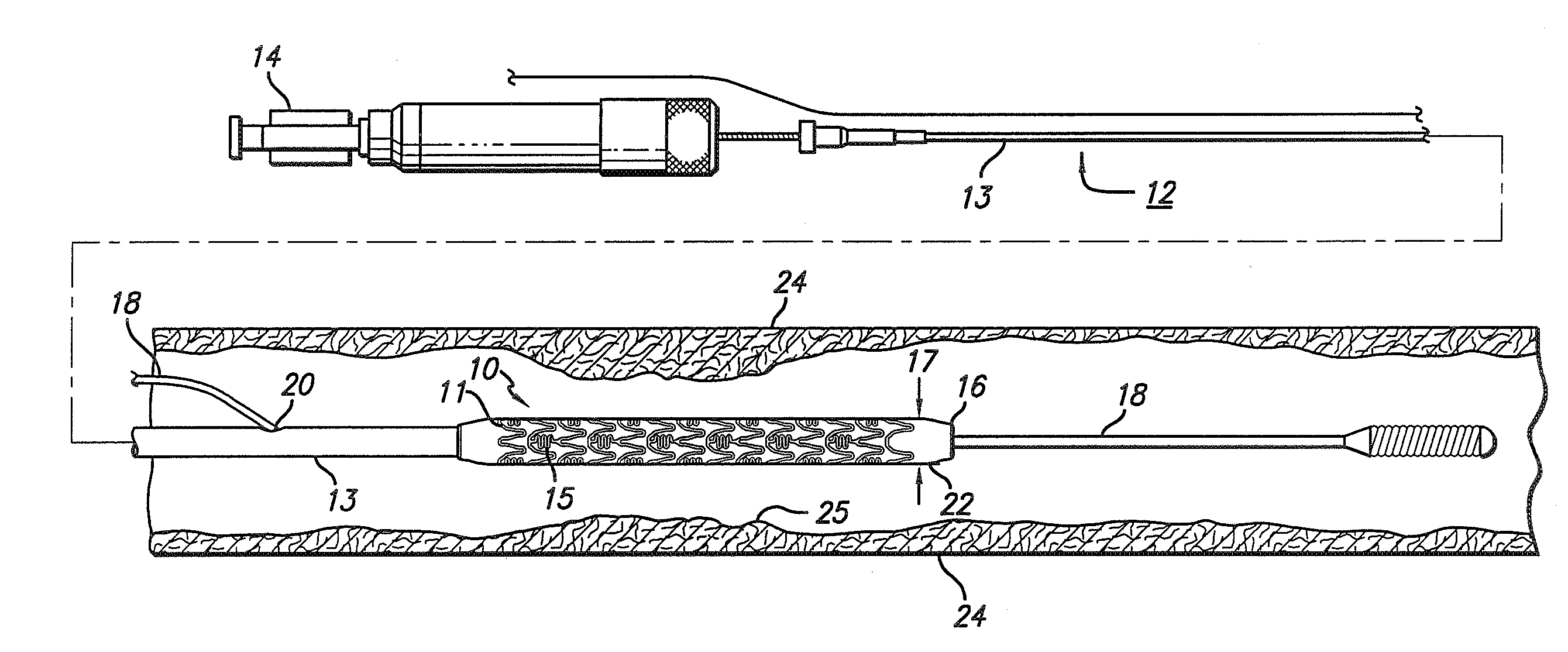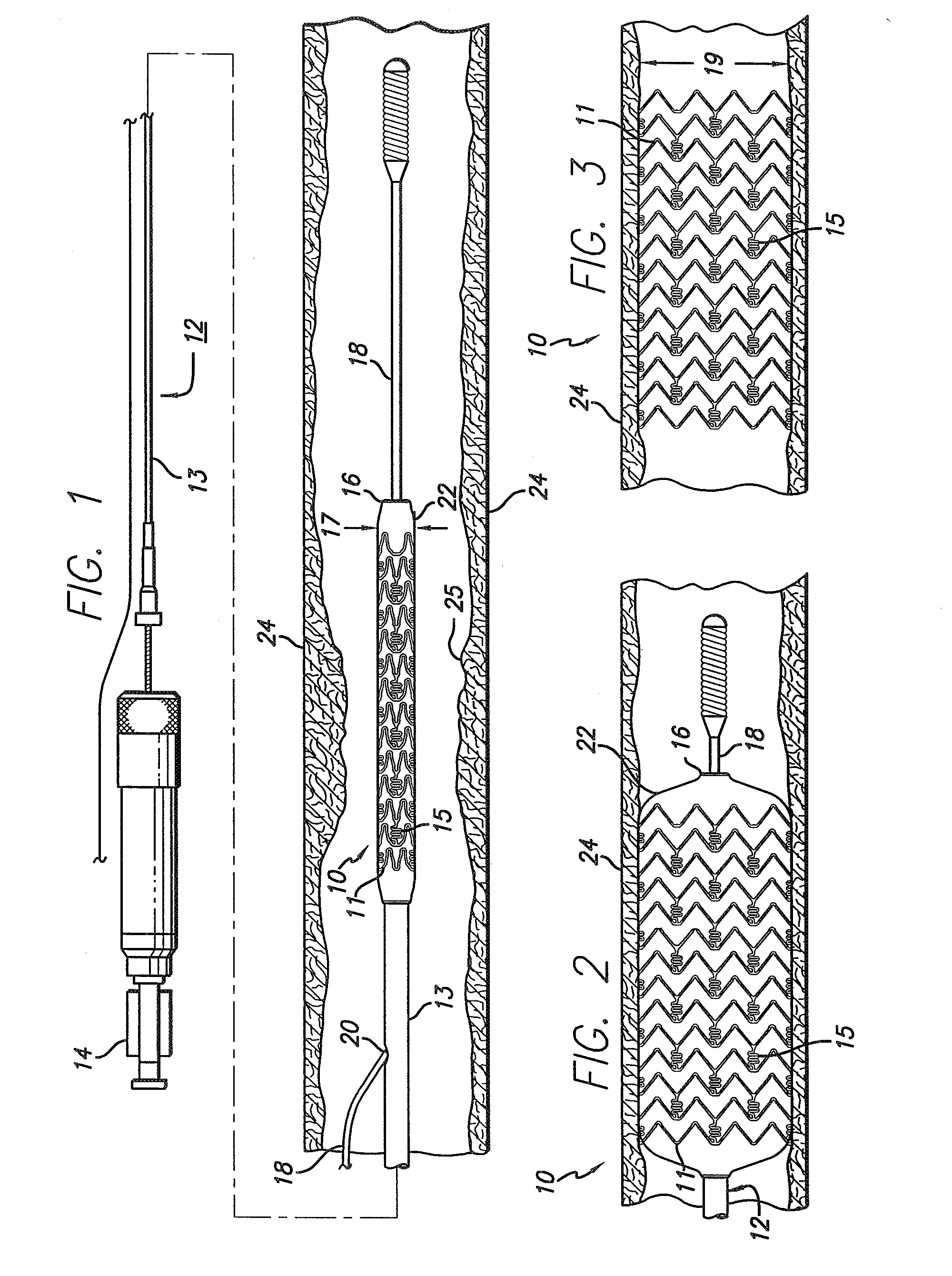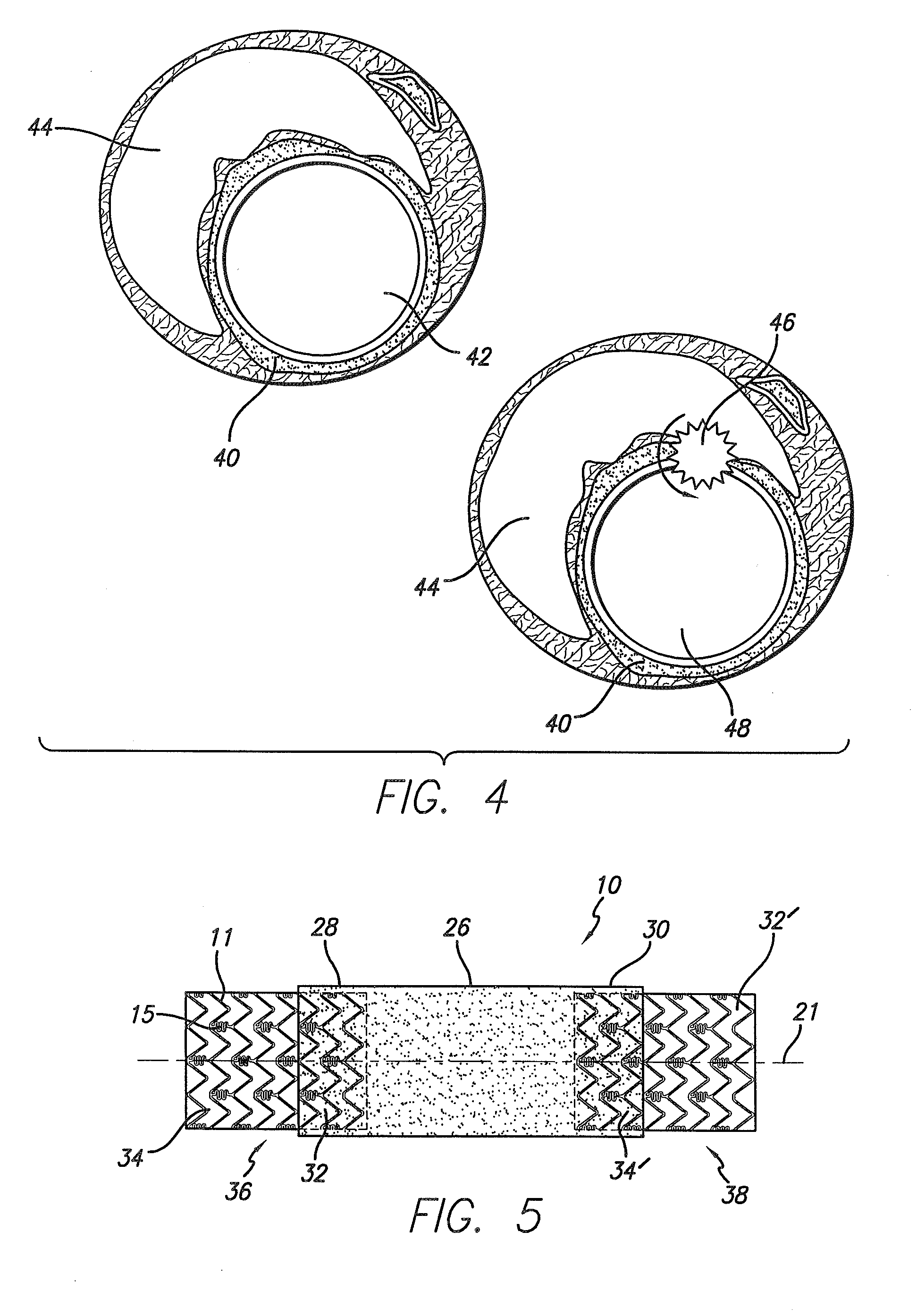Stent assembly for the treatment of vulnerable plaque
a vulnerable plaque and stent technology, applied in the field of vascular repair devices, can solve the problems of less understanding of thrombosis, total thrombotic occlusion of the artery, and inability to stabilize or vulnerable plaque, and achieve the effect of reducing the stress of the cap
- Summary
- Abstract
- Description
- Claims
- Application Information
AI Technical Summary
Benefits of technology
Problems solved by technology
Method used
Image
Examples
Embodiment Construction
[0029]The stent assembly of the present invention serves to treat a lesion with vulnerable plaque by reducing the cap stresses. The embodiments set forth herein describe a first metallic stent 36 interconnected to a second metallic stent 38 by a polymeric sleeve portion 26 (FIG. 5) to thereby form the stent assembly of the present invention. Further, methods of fabricating a stent assembly for the treatment of vulnerable plaque and methods of using the stent assembly for the treatment of the same are also disclosed herein.
[0030]Turning to the drawings, FIG. 1 depicts a metallic stent 10 incorporating features of the invention (shown without a polymer sleeve portion 26 (FIG. 5)) mounted on a catheter assembly 12 which is used to deliver the stent and implant it in a body lumen, such as a coronary artery, peripheral artery, or other vessel or lumen within the body. The stent generally includes a plurality of radially expandable cylindrical rings 11 disposed generally coaxially and int...
PUM
 Login to View More
Login to View More Abstract
Description
Claims
Application Information
 Login to View More
Login to View More - R&D
- Intellectual Property
- Life Sciences
- Materials
- Tech Scout
- Unparalleled Data Quality
- Higher Quality Content
- 60% Fewer Hallucinations
Browse by: Latest US Patents, China's latest patents, Technical Efficacy Thesaurus, Application Domain, Technology Topic, Popular Technical Reports.
© 2025 PatSnap. All rights reserved.Legal|Privacy policy|Modern Slavery Act Transparency Statement|Sitemap|About US| Contact US: help@patsnap.com



